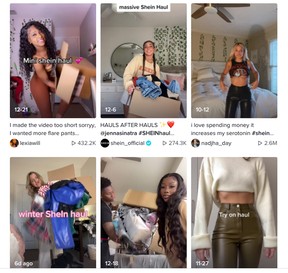It didn't take long for Georgia offensive coordinator Todd Monken to realize that tight end Brock Bowers was different from a lot of freshmen who have come through the Bulldogs' program.
During a practice this past spring, the Bulldogs put GPS systems on the backs of their top 40 or so players. Bowers, who arrived on campus all the way from Napa, California, only a couple of months earlier, was among them. When Georgia's sports science personnel gave Monken the GPS readings after practice, he was impressed by what he saw.
"There's a small group of guys ... that when you put that GPS system on them, the band of their top and their bottom miles per hour are really, really small," Monken said. "They only know one speed, and that's working their rear end off every day."
While some players' miles-per-hour readings might vary between 13 mph and 21 mph during a practice, Bowers' rarely moves.
"Right away, you can tell he only knew one speed," Monken said.
During another practice, the Bulldogs were running laps around the playing field at Sanford Stadium as part of their conditioning drills. Monken noticed that Bowers was way out in front of the other tight ends.
"I wouldn't have done it as a young player," Monken said. "I would run with the pack, I would have run with the rest of the guys. Not Brock Bowers. Tight ends were running, he'd be 10 yards in front of every other guy. He was working at his own speed to be the best he could be, and that is a rare quality to put yourself out there like he did."
That work ethic, combined with exceptional speed and a 6-foot-4 and 230-pound frame, has allowed Bowers to become not only one of the best freshmen in the FBS, but perhaps the most explosive tight end in the country.
Going into Friday's game against No. 2 Michigan in a College Football Playoff Semifinal at the Capital One Orange Bowl (7:30 p.m. ET, ESPN and ESPN App), Bowers leads the No. 3 Bulldogs with 47 receptions for 791 yards. His 11 touchdown receptions are the most by a Georgia freshman and any Georgia tight end in a single season.
While Georgia doesn't allow freshmen to speak to the media, Bowers' coaches and family can all attest to his work ethic they have seen up close.
"He's going to continue to develop his skill set," Monken said. "He's probably got more range than we thought. We knew he had the run-after-catch ability. We saw that on tape. ... But he works awfully hard at his craft. It's important to him. He doesn't say a lot, he just works."
DeAnna Bowers didn't expect her son to make such an impact at Georgia so quickly, but she isn't surprised to hear what coaches are saying. When Brock was 9 years old, she remembers him chasing down another kid who stole the ball from him during a soccer game. By the time Brock caught him and kicked the ball out of bounds, he couldn't catch his breath. Coaches had to calm him down on the sideline.
"I told him in the car, 'Dude, you cannot ... '" DeAnna said. "The coaches were worried about him. They had to get him to stick his head between his knees to get him to breathe. He was in tears. His whole life, he has been that competitive."
Then, during his junior year at Napa High School, Brock played nearly every snap on offense and defense during a game on a hot night in September. While he was driving his Bronco home after the game, his legs locked up from cramps. He had to pull into a parking lot and call his parents to get him.
"He was playing almost all 60 minutes at that speed," DeAnna said. "He called me in tears and said, 'I can't drive. I can't move.'"
DeAnna and her husband, Warren, picked Brock up and brought him home.
"He was in pain from cramping," DeAnna said. "He laid on the floor in the living room and we just couldn't calm him down. We were looking at each other saying, 'What are we going to do with this kid?' That's what he gave to his team during that junior season."
Georgia coach Kirby Smart said he got a peek of Bowers' diligence while the Bulldogs were recruiting him. When COVID-19 wiped out much of the recruiting calendar in 2020, the Bulldogs asked prospects to send them videos of what they were doing to stay in shape. Bowers missed his entire senior campaign at Napa High in 2020 when the California Interscholastic Federation canceled the season because of coronavirus concerns.
"When we recruited him, I thought he was different than a typical freshman," Smart said. "This was a guy that would put his phone up and go run up a mountain or a hill out in Napa and sprint up the hill and back down the hill and send video of it. Like he was wired differently. He worked out every day. He competed every day."
Bowers comes from a competitive and athletic family. His father was a center on Utah State's football team in the early 1990s; his mother, the former DeAnna Earsley, was a four-year starting pitcher for the Aggies' softball team from 1990 to 1993. She was an All-American and is in the school's sports hall of fame. His sister, Brianna, was an outfielder at Sacramento State the past three seasons. Still, DeAnna could sense there was something different about her son.
"Brock has always been really competitive and it's something inside him," DeAnna said. "We didn't train him to be that way, but we're a very competitive family. Board games are bad for us and we don't do those."
DeAnna wasn't surprised her son chose to play college football at a school more than 2,500 miles away from home because he wanted to compete against the best. Before Brock committed to Georgia, DeAnna promised him that either she or his father would be at every one of his games. She took a leave of absence from her teaching job and attended every game this season. Both parents plan to be at Hard Rock Stadium to watch the Bulldogs play Michigan.
"He knew the SEC was one of the most competitive conferences out there," DeAnna said. "He wanted to compete with the best of the best to see how he would stack up to that competition."
Unlike the bottles of wine from the vineyards that surround the Bowers family home, the Bulldogs didn't have to wait for Brock to age well. He was ready to play from the start, catching six passes in a 10-3 win against Clemson in the opener. As Brock became more comfortable, he emerged as Georgia quarterback Stetson Bennett's favorite target. He scored two touchdowns in five games and then had a career-high 10 receptions for 139 yards with one score in a 41-24 loss to Alabama in the SEC championship game.
He figures to be one of Georgia's primary weapons against the Wolverines.
"Brock is a heck of a player, man," Michigan defensive coordinator Mike Macdonald said. "He's really dynamic. He really plays every position. He'll play the Z, the Y, the X, the move guy, the down guy. They'll give it to him on reverses, screens. It's pretty impressive. A tribute to their coaching staff for putting him in positions to affect the game.
"I think the first thing you have to have is an awareness of where he's at, and if he's out of place you have to understand that. And then just understand the things that he likes to do from certain positions so we can help try to slow him down as best we can."
College Football Playoff 2021 - Georgia's Brock Bowers knows only one speed - fast - ESPN
Read More
















